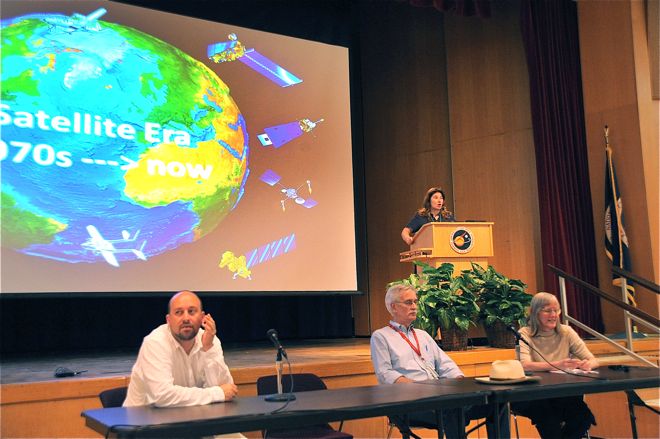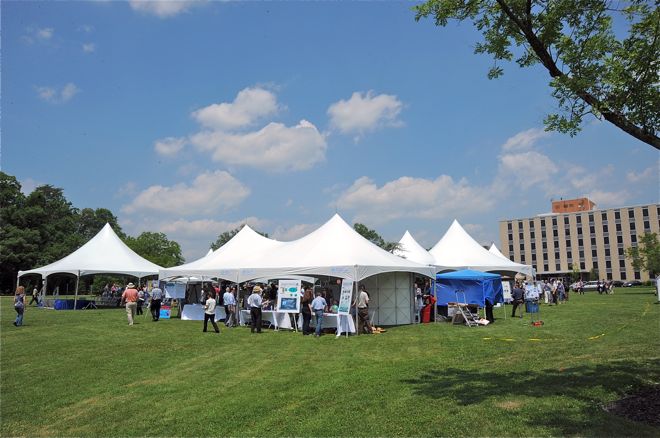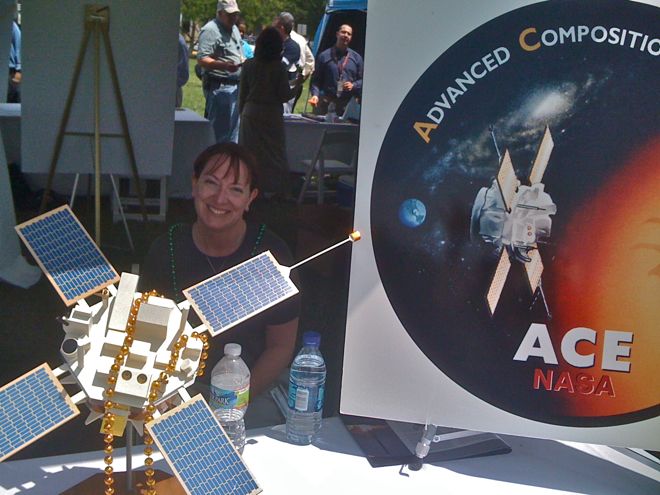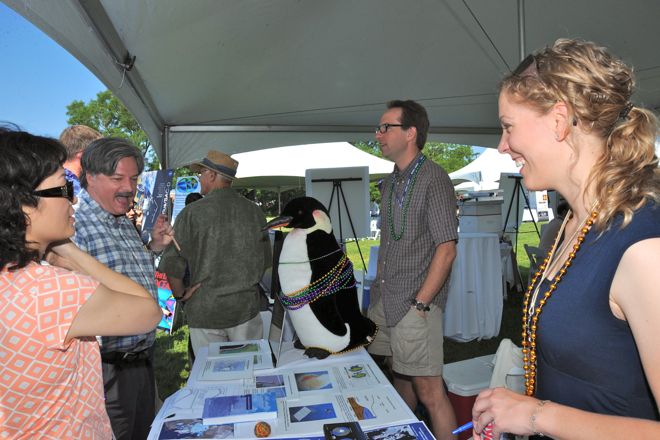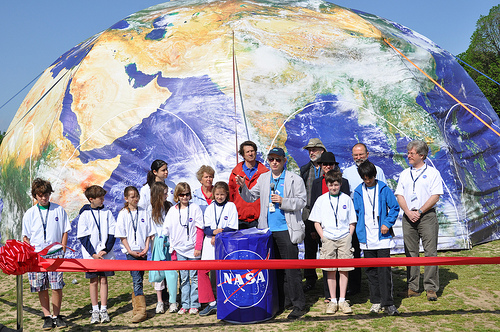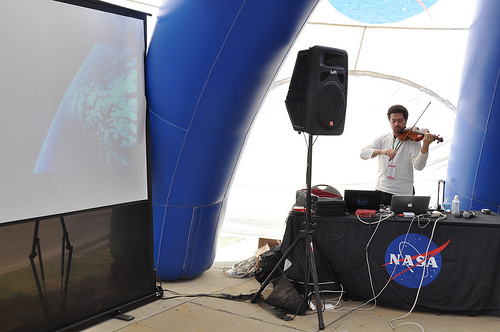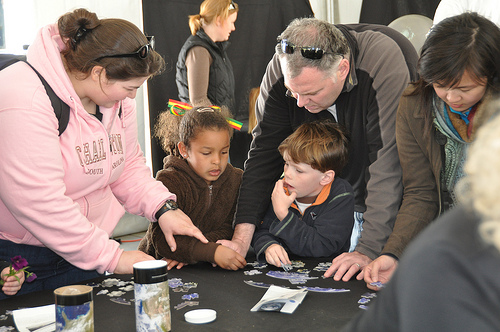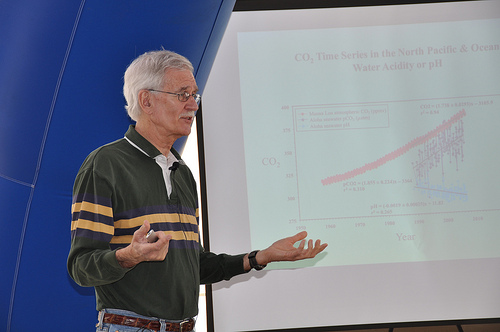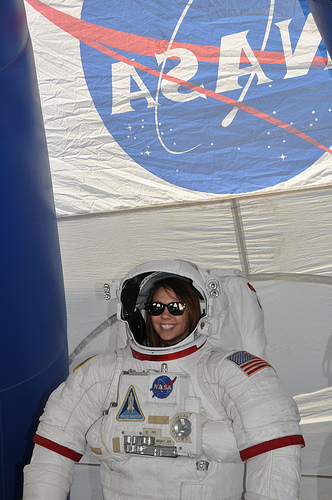When the volcano roared to life and began spewing huge amounts of ash and gas into the atmosphere, Eyjafjallajökull’s giant plume stranded millions of travelers and captivated the rest of us as it wafted away from Iceland.
Most images have shown how the plume might appear to a human from space. But to an aerosol scientist, the real excitement comes from the instruments that produce less recognizable images that nevertheless reveal subtle details about the nature of the plume.
One instrument or one satellite alone is not likely to yield breakthrough insights about volcanic plumes. Rather, constant comparisons between numerous sets of data—collected by a variety of satellite, aircraft, and ground-based platforms—are most likely to lead to new discoveries.
With that in mind, aerosol scientists from NASA’s Goddard Space Flight Center and neighboring institutions met last month at a special AEROCENTER seminar to share information about some aspects of Eyjafjallajökull’s plume that they’ve studied so far.
Such cross-satellite and cross-platform efforts make it possible to address some of the thorniest problems in the field. Comparing results from several instruments, for example, makes it easier to understand the dispersion of plumes and—with the help of computer models—predict how plumes might behave, noted Santiago Gassó, the Goddard geophysicist who organized the seminar.
Though the scientists have just started picking their way through Eyjafjallajökull data, there are a number of presentations from the meeting to click through if you’re interested. There’s nothing Earth-shattering to report yet, but we did find some views of the plume that you likely haven’t seen in the newspapers. You can find more imagery of Eyjafjallajökull’s eruptionand plume here,here, here, here, here, here, and here.
MISR – Plume Height

NASA scientists used an instrument called MISR aboard the Terra satellite to view the ash plume from multiple angles, and then applied a stereo-imaging technique to derive the height of the ash cloud at different points during the eruption. The result is the colorful image on the right that distinguishes plume height with bright reds (6 km), oranges (5 km), yellows (4 km), greens (3 km), and blues (2 km). The blue, near-surface part of the plume is resuspended ash. (Image Credit: NASA/JPL/MISR)
CALIPSO – Vertical Profile
The CALIPSO satellite provides a vertical profile of a whole slice of the atmosphere with a LIDAR instrument that shoots laser pulses at the atmosphere below and measures how it reflects off particles in the atmosphere. In this image, captured on April 17 as the satellite passed over France, the plume appears as a wispy band of yellow and red. The thick yellow layer below is air pollution hovering near the surface of France. (Image Credit: NASA/CALIPSO/Winker)
OMI – Sulfur Dioxide (SO2)
The Ozone Monitoring Instrument (OMI) aboard NASA’s Aura satellite had eyes for ash as well as something that’s invisible to the human eye: the transparent (and toxic) gas sulfur dioxide (SO2). OMI observed sulfur dioxide billowing out of the volcano at a clip of as much as 10 thousand tons a day. The OMI instrument produced this image, which shows higher concentrations of sulfur dioxide in red and lower concentrations in blue and purple, on April 30—two weeks after the peak of Eyjafjallajökull’s eruption between April 14 and 17. (Image Credit: NASA/OMI/via Joiner)
DLR Falcon – Aircraft LIDAR
A few days after the eruption began, European scientists scrambled a DLR Falcon jet equipped with a LIDAR and other instruments. The LIDAR, cruising at 8 km altitude, detected volcanic ash in the altitude range of 3.5 km to 5.5 km. The ash plume appears as a yellow and green mass above a layer of clouds (seen as the line of rust-colored spots beneath the ash). When the instrument collected this data, the ash had aged four or five days. The white streaks on the image represent areas where the LIDAR did not detect a significant amount of aerosol. (Image Credit: DLR/via Diehl)

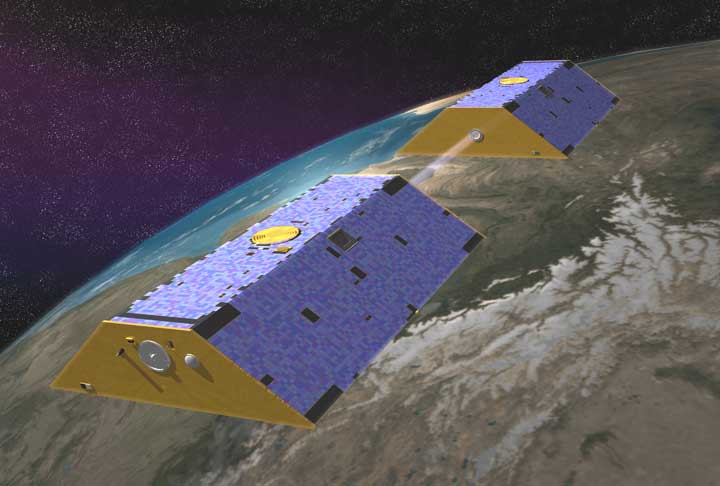
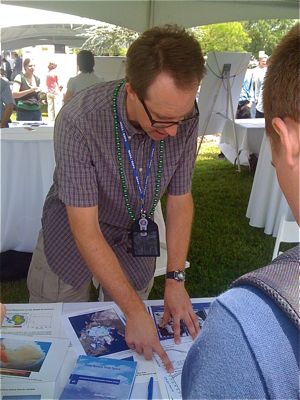 The daily grind of a science and engineering career can leave little time to inquire how colleagues in the very next office have been spending their days and months. Toward remedying that, employees at NASA’s Goddard Space Flight Center emerged from their cubicles and offices on June 2 and mingled outdoors, Cajun style, at the center’s second annual
The daily grind of a science and engineering career can leave little time to inquire how colleagues in the very next office have been spending their days and months. Toward remedying that, employees at NASA’s Goddard Space Flight Center emerged from their cubicles and offices on June 2 and mingled outdoors, Cajun style, at the center’s second annual 